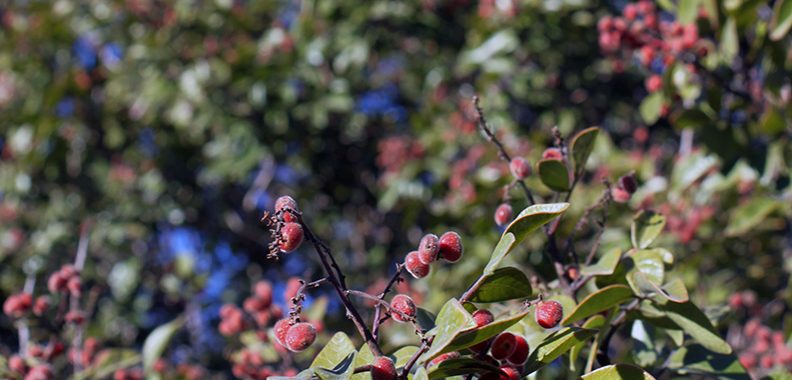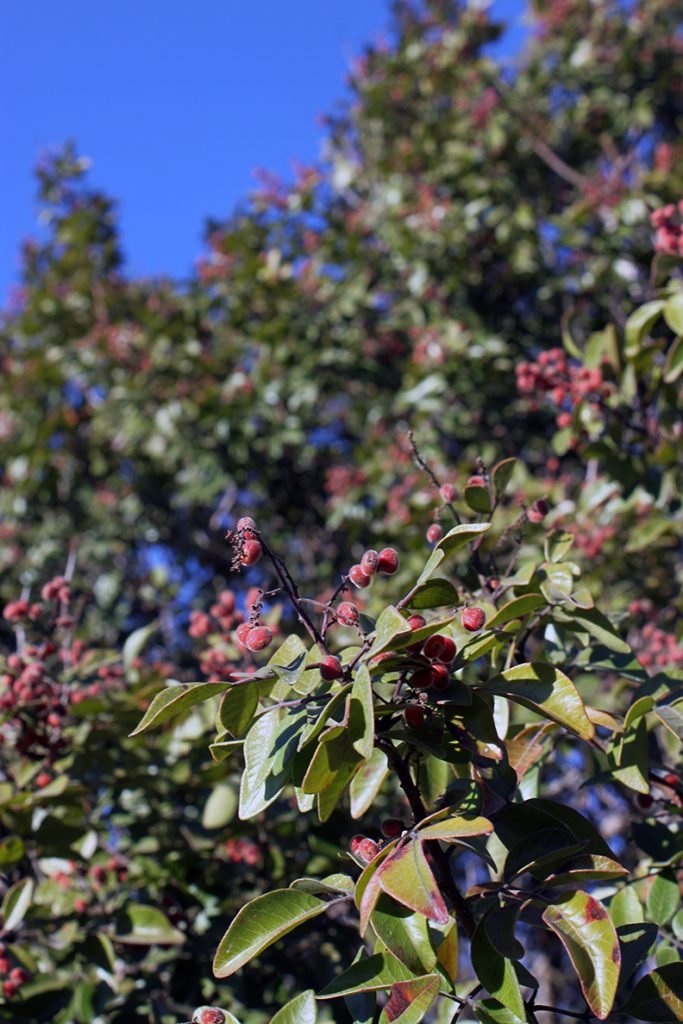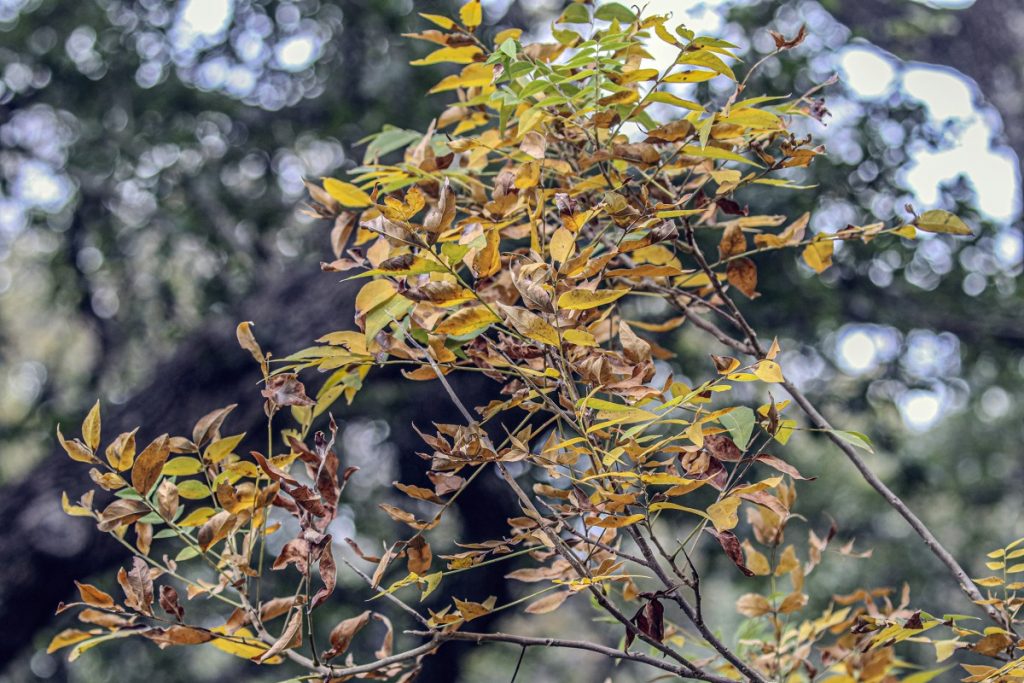Trail Notes: The Autumn Sky
Ask me what my favorite season is, and I’m likely to answer with whatever season we happen to be in. Unless it’s July, of course. Or August. Or September. I don’t do summer well.
When you get right down to it, though, I’d say my favorite season here in Texas is the fall, and not because of whatever color we might see in the handful of trees that turn. No, I love autumn mainly for the sky.
Come late October or November, my mind returns to the opening lines of an Amy Lowell poem, “Meeting House Hill”: “I must be mad, or very tired, / When the curve of a blue bay beyond a railroad track Is shrill and sweet to me like the sudden springing of a tune, / And the sight of a white church above thin trees in a city square / Amazes my eyes as though it were the Parthenon.”
This section of the poem says nothing about the sky, but it nonetheless captures the intensity of blue I find here in the Texas fall. When color is “shrill and sweet”—that is, when its lines are precise and sharp, unlike the more soft and fuzzy shades of spring—when the spire of a white church leaps out in contrast to the sky: I am amazed. I know that autumn’s here.
There are other signs, such as the call of the sandhill cranes flying thousands of feet overhead, but the color of the autumn sky is what affects me most. How can a particular shade of blue evoke a memory, something that seldom comes to mind at any other time of year? We know, both from psychologists and common sense, that color alters our emotions. For example, I painted my home office forest green because that color calms and nurtures me. The red accent wall in our living room emits an energy I enjoy. Elsewhere, gold walls create a sense of warmth. What you won’t find in my house are yellow and pink, both of which tend to make me tense. Don’t ask me why.
What a blue autumn sky conjures up in me is a memory from my childhood on the coast. It is October, and I am sitting in a wooden swing beneath a large pecan. Three other kids are with me, and we are cracking and eating nuts we’ve gathered from the lawn. The big white house behind us, built in 1922 as a hospital, was long ago converted to apartments, but none of us lives there. Our homes are a little farther down the block, and we are here without permission, enjoying the kind of free-range childhood kids in small towns had. This is blue for me, and it is “shrill and sweet” indeed.
What makes the autumn sky this shade of blue? The answer lies in part in lower humidity. “As air temperatures cool, the amount of moisture that the air can hold lessens,” explains Thought.com. “With little to no clouds or haze to veil the sky, its blue hue appears purer, and the sky itself, more open and vast.”
Another, more obvious reason is the sun’s lower position in the sky. “With the sun no longer directly overhead,” Thought.com notes, “you could say that more of the sky is significantly angled away from the sun. The Rayleigh scattering [the sunlight bouncing off molecules in the air] directs more blue light towards your eyes, while the indirect sunlight decreases the incoming levels of red and green—the result of which is a more intense blue sky.”
The final piece of the puzzle has more to do with psychology than with physics. When we see the yellow, orange, or red of autumn leaves or berries against the sky, the blue is more intense. Our perception is that the saturation has been bumped up, when, in truth, it hasn’t.
What kinds of trees and shrubs can perform that role along our trails? This autumn has been mild thus far, so fall colors are late in popping out. That said, these species are among those to look for:
- Cedar elm
- Coralberry (red berries)
- Evergreen sumac (red berries)
- Eve’s necklace
- Flame-leaf sumac
- Mexican buckeye
- Pigeonberry
- Possumhaw and yaupon (red berries)
- Soapberry
- Texas red oak
- Virginia creeper
Other native species that provide fall color may or may not be found in our natural areas:
- American smoke tree
- Bald cypress
- Bigtooth maple
- Carolina buckthorn
- Escarpment black cherry
- Northern spicebush
- Pecan
- Sweetgum
- Texas ash
If you’re thinking of adding fall color to your own landscape—and right now is a great time to plant—resist the temptation to purchase any these. Granted, in many cases, their colors are stunning, but these four can also be invasive:
- Bradford pear
- Chinese pistache
- Chinese tallow
- Crape myrtle
- Japanese maple
- Nandina
- Oakleaf hydrangea
Written by Susan Hanson, editor of The Loop, SMGA board member, and chair of the Outreach Committee.




